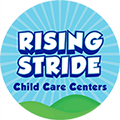Under the bright sun, there’s an often-overlooked risk: some of the highest ultraviolet (UV) radiation levels in the world. This makes sun safety for kids a critical topic for parents and educators. Alarmingly, over half of US are diagnosed with skin cancer at some point in their lives. It’s a sobering statistic, but the good news is, early habits can make a big difference.
This article explores essential tips for children’s sun protection. From infant sun protection strategies to activities that teach kids sun safety, we’ll cover practical steps to keep your little ones safe under the sunny skies.
Why Is Sun Safety for Kids Important?
Beneath every child’s soft skin lies a story of vulnerability. While grown-ups’ skin has learned to weather the elements, our little ones need extra care when it comes to sun safety for kids. Those seemingly harmless UV rays can write permanent chapters on delicate skin – from angry sunburns today to more serious concerns tomorrow.
Teaching sun safety in schools matters because childhood sun protection shapes lifelong health. Here at Rising Stride, we weave children’s sun protection into every outdoor moment. Our thoughtfully designed shade shelters stand guard over play spaces, while careful scheduling means our littlies dodge the day’s harshest rays. Through gentle guidance and daily practice, we’re helping each child become sun-smart heroes of their own health story.
Understanding UV Exposure and Its Effects on Kids
The sun is powerful. While it gives us warmth and vitamin D, it also emits invisible UV rays that can harm skin and eyes if we’re not careful. Learning about UV exposure is the first step to understanding sun safety for children.
What Does UV Exposure Mean?
UV rays, or ultraviolet radiation, come in three types: UVA, UVB, and UVC. UVA and UVB rays are the ones we need to watch out for, as they reach the Earth’s surface and can cause skin damage and ageing.
The UV Index—a scale measuring UV radiation levels—helps us plan ahead. UV ratings are frequently in the “Very High” or “Extreme” range, even on cloudy days. Knowing when UV levels are highest helps families practice children’s sun protection more effectively.
Effects of UV Exposure on Kids
Children need extra care when it comes to UV exposure. Here’s why:
- Higher Sensitivity: Kids’ skin is thinner and produces less melanin, the pigment that helps protect against UV damage. This makes them more prone to sunburn.
- Long-Term Impacts: Sun damage accumulates over time. Childhood sunburns significantly increase the risk of skin cancer and premature ageing later in life.
- Educational Opportunity: Teaching sun safety for kids while they’re young creates habits that last a lifetime, reducing risks as they grow.
Essential Sun Safety Tips for Children
Sun safety for kids doesn’t have to be complicated. A few small changes can make a big difference. From applying sunscreen to seeking shade, building these habits early ensures kids stay safe while encouraging safe outdoor play.
Tip 1: Applying Sunscreen Properly
Sunscreen is a must. Look for SPF 30 or higher, broad-spectrum coverage, and water resistance. Apply it 20 minutes before heading outside, covering all exposed skin, including tricky spots like ears, neck, and the tops of feet. Don’t forget to reapply every two hours—or sooner if kids are swimming or sweating.
Tip 2: Protective Clothing
Clothing is a simple yet effective way to block UV rays. Lightweight, long-sleeved tops, long pants, and broad-brimmed hats work wonders. Add sunglasses with UV protection for extra coverage. Making children’s sun protection stylish and fun can encourage kids to keep covered.
Tip 3: Seeking Shade
Shade is your best friend during peak UV hours (10 a.m. to 3 p.m.). Encourage kids to play under trees, umbrellas, or other shaded areas. It’s an easy way to reduce exposure while staying active outdoors.
Tip 4: Role of Rising Stride in Sun Safety
At Rising Stride, sun safety is part of our daily routine. We use shaded outdoor play areas, limit outdoor time during high UV periods, and teach sun safety facts for kids in fun, engaging ways. This ensures children can play and learn safely while enjoying the benefits of the outdoors. Explore our childcare facilities to see how we create sun-smart play spaces.
FAQs on Sun Safety for Children
1. How often should I reapply sunscreen on my child?
Every two hours, or more often if they’ve been swimming or sweating. Proper sunscreen use is a cornerstone of sun safety for kids.
2. Are there specific sunscreens recommended for kids?
Yes, choose SPF 30+ products designed for sensitive skin. For infant sun protection, use baby-friendly formulas that avoid harsh chemicals or fragrances.
3. What are the best times to avoid direct sun exposure?
Avoid peak UV hours, typically from 10 a.m. to 3 p.m. Early mornings or late afternoons are safer for outdoor activities.
4. What role do schools and childcare centers play in sun safety?
Schools and childcare centers, like Rising Stride, implement policies like “No hat, no play” and scheduled sunscreen breaks. We also ensure shaded play areas and sun-smart education for kids.
5. How can I encourage my child to practice sun safety?
Make it engaging! Use fun sun safety activities, let them pick their own sun-safe clothing, and explain why sun safety matters in simple, relatable terms.

